Magic Leap and Google presented an AR glasses prototype reference design at the Future Investment Initiative in Saudi Arabia this week, marking a significant milestone in their expanded three-year partnership to advance augmented reality technology.
The lightweight prototype, weighing under 50 grams, integrates Google’s Raxium microLED-based light engine with Magic Leap’s precision waveguides and optical systems to deliver what executives describe as exceptionally clear and stable imagery. The device features a monocular display and represents the first public demonstration of their collaborative work since announcing the strategic partnership in May 2024.
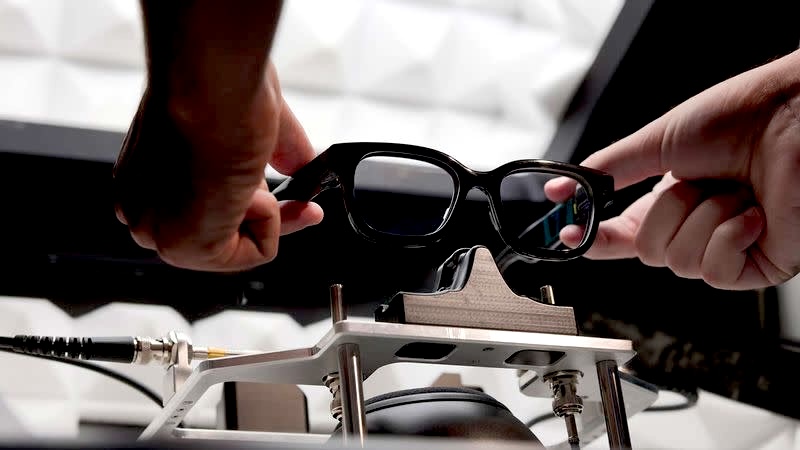
Building a Blueprint for Android XR Hardware Partners
Rather than launching as a consumer product, the prototype serves as a reference design for manufacturers looking to enter the Android XR market. “Magic Leap’s optics, display systems, and hardware expertise have been crucial in bringing our Android XR glasses concepts to life,” said Shahram Izadi, Google’s Vice President of XR. This collaboration positions Magic Leap as an “AR ecosystem partner” focused on supporting global technology leaders developing AR glasses.
The demonstration showcased multimodal AI capabilities powered by Google’s Gemini assistant, including real-time translation, contextual assistance, and seamless integration between digital content and the physical world. Magic Leap CEO Ross Rosenberg and Google executives presented the technology as enabling users to “stay in the real world while benefiting from the knowledge and functionality of multimodal AI.”
The reference design approach makes strategic sense for both companies. Google gains access to Magic Leap’s optical expertise without manufacturing hardware itself, while Magic Leap monetizes its technology through licensing rather than competing in the brutal consumer hardware market where it previously struggled.
Expanding the Android XR Foundation
The announcement arrived weeks after Samsung launched its $1,799.99 Galaxy XR headset—the first major device on Google’s Android XR platform. This broader ecosystem strategy mirrors Google’s approach to Android smartphones, providing the operating system and AI foundation while hardware partners design diverse devices.
Google has established additional partnerships with fashion brands Warby Parker and Gentle Monster to create consumer smart glasses, alongside working with Samsung on headsets and future AI-powered glasses. The Android XR platform supports existing Android applications and includes development tools familiar to the Android community.
This ecosystem play differs fundamentally from Meta’s vertically integrated approach with Quest headsets and Ray-Ban smart glasses. Google is betting that opening the platform to multiple hardware partners will drive faster innovation and broader adoption than any single company could achieve alone.
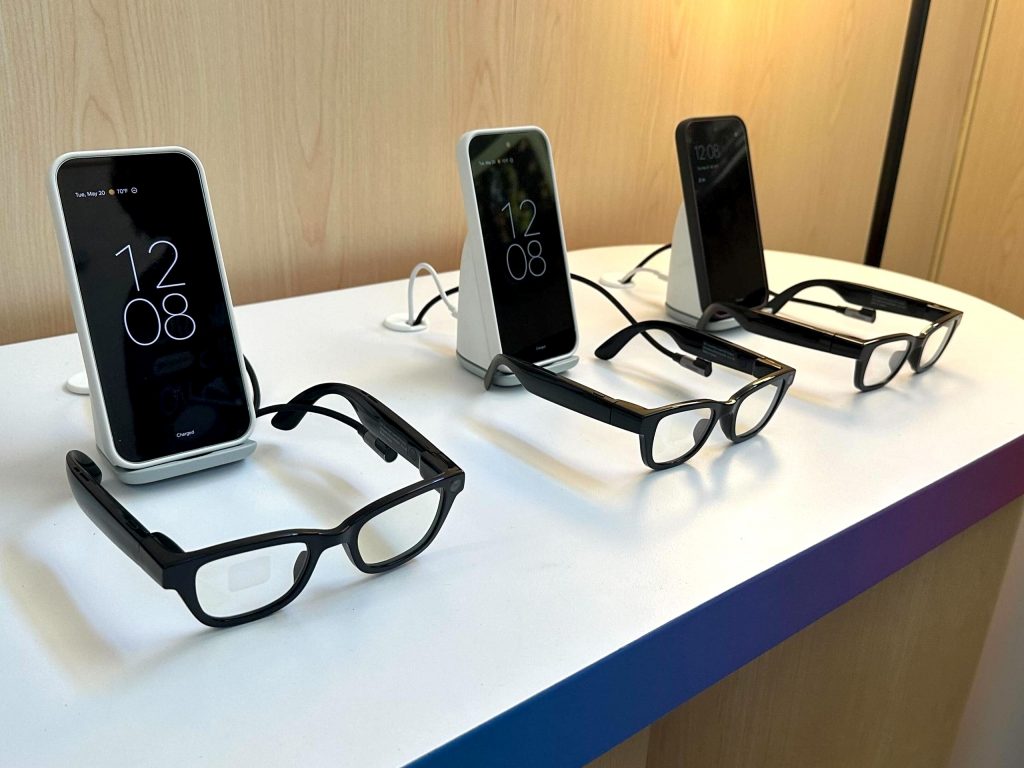
Magic Leap’s Strategic Pivot from Hardware to Enabler
Magic Leap’s transformation from struggling consumer hardware maker to technology licensing partner reflects the broader maturation of the AR industry. After raising over $4 billion and pivoting from consumer to enterprise markets, the company now leverages its 15 years of AR development expertise within Google’s ecosystem rather than competing against it.
The journey hasn’t been smooth. Magic Leap’s original consumer product failed to gain traction despite massive funding and ambitious promises. The enterprise pivot stabilized the business but didn’t deliver the explosive growth investors expected. Partnering with Google provides a path to relevance without the capital requirements and market risks of independent hardware production.
The prototype glasses maintain familiar aesthetics similar to Meta’s Ray-Ban collaboration while incorporating significantly more advanced display technology designed for all-day wear and professional applications.
Technical Integration and Display Technology
The sub-50-gram weight represents a crucial achievement for AR glasses viability. Previous augmented reality devices often proved too heavy for extended wear, creating user fatigue that limited adoption. By keeping weight below 50 grams—lighter than many standard eyeglasses—the design addresses a fundamental barrier to mainstream AR acceptance.
Google’s Raxium microLED technology provides the display foundation. MicroLED offers advantages over OLED and LCD including higher brightness, better power efficiency, and longer lifespan—all critical for wearable devices. Magic Leap’s waveguide optics then project this imagery into the user’s field of view while maintaining transparency for real-world visibility.
The monocular display choice suggests this prototype prioritizes compactness and battery life over stereoscopic depth perception. While binocular displays enable more immersive 3D effects, monocular designs reduce complexity, power consumption, and weight—important tradeoffs for glasses intended for extended daily use.
Gemini AI Integration and Multimodal Capabilities
The demonstration emphasized Gemini’s role in making AR glasses genuinely useful rather than just technically impressive. Real-time translation enables conversations across language barriers without pulling out a phone. Contextual assistance provides information about objects or locations in view. The integration aims to make AI feel ambient and natural rather than requiring explicit app launches or voice commands.
This ambient computing vision has been promised for years but rarely delivered satisfactorily. Success requires AI that understands context, responds quickly, and provides relevant information without overwhelming users. Whether Gemini achieves this balance in real-world usage beyond controlled demonstrations remains uncertain.
Privacy concerns inevitably arise with always-on AI assistants equipped with cameras and microphones. Google will need to address these concerns convincingly for consumer adoption, likely through clear visual indicators when recording, strict data handling policies, and granular privacy controls.
Market Timing and Competitive Landscape
The AR glasses market remains in early stages despite years of hype and billions in investment. Apple’s Vision Pro launched as a mixed reality headset rather than lightweight glasses, suggesting even Apple hasn’t solved the miniaturization and battery challenges for true AR eyewear. Meta continues iterating on Ray-Ban smart glasses with limited display capabilities.
Magic Leap and Google’s reference design approach acknowledges that the technology still requires refinement before consumer readiness. By enabling multiple manufacturers to build on their foundation, they accelerate development while sharing the financial burden and market risk across ecosystem partners.
Whether this strategy successfully establishes Android XR as the dominant AR platform depends on hardware partner adoption, developer support, and consumer reception when products eventually launch. The reference design represents an important step, but the path from prototype to mainstream adoption remains long and uncertain.
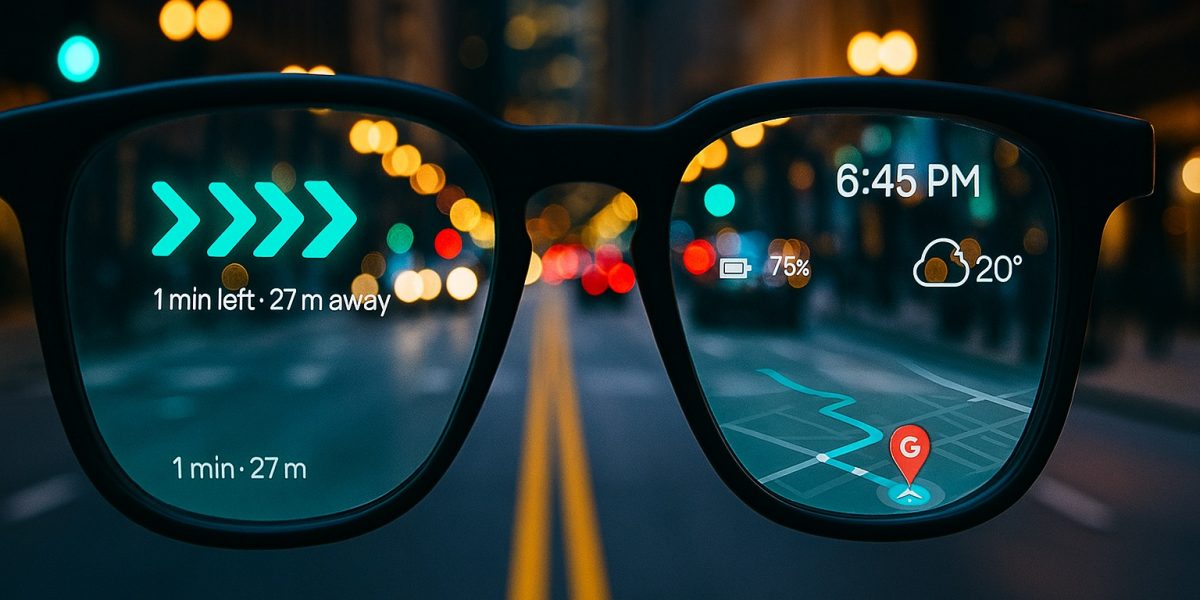
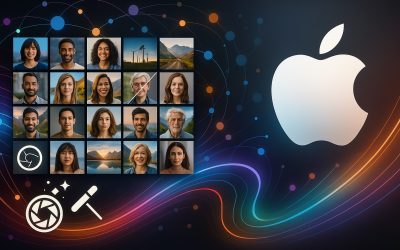
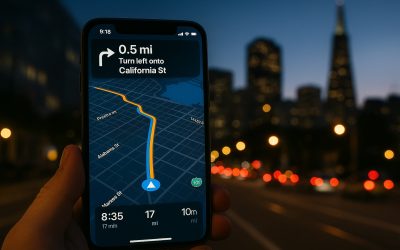
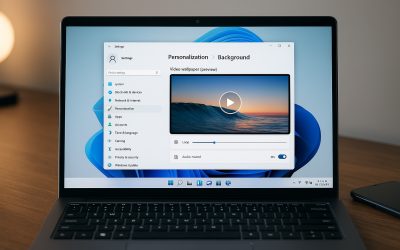
Post a comment